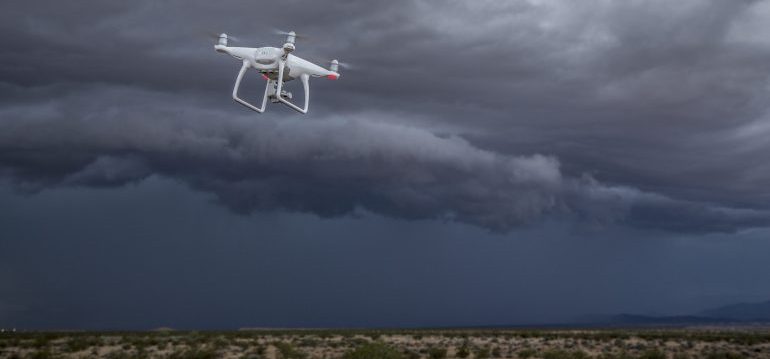The ongoing growth of the drone market looks set to continue, with 7.5 million drones projected to be taking to the skies in Europe by 2030. Gartner analysis shows huge global uptake in construction, emergency services, insurance and logistics. For drone deliveries to be commercially viable, however, flight time and range needs to be maximised and downtime for recharge and repair reduced.
Reliability requirements for large fleets of wide-ranging urban delivery drones are stringent, as they will be constantly exposed to changing weather patterns. Governments will regulate forcefully to ensure manufacturers and operators of delivery drones can guarantee fleets are safe and reliable.
With drones now poised to be rolled out at scale for frequent, long-term autonomous operation, electronic components emerge as a likely point of failure. Ambient humidity, rain, salt fog and other atmospheric contaminants pose a high risk of electrical shorting and corrosion.
The form factor of the now-ubiquitous rotor drones makes comprehensive waterproofing challenging. Internal seals or external “wetsuit” style waterproofing adds weight to devices and limits maximum range, flight speed and payload. Thick conformal coatings painted or sprayed directly onto circuit boards and components keep water out but can’t be used on connectors, because they inhibit electrical conductivity, and are prone to cracking and delaminating.
This is where plasma nano-coating technology is the perfect solution. Already widely used in consumer electronics, the technology uses plasma to bond an invisibly thin, ultra-light layer of polymer to the surface of the electrical components. Nano-coatings allow for full reworkability and repair of drones, but unlike other water protection methods, provide continual protection to a treated device’s electronic components for the product lifetime. And in contrast to mechanical solutions, the protection isn’t compromised when the outer body of a drone is knocked or damaged. The microscopically thin coatings also add up to huge weight savings, with a nano-coating protection on a mid-sized drone weighing as little as half a gram, compared to 170 grams or more for a “wetsuit” or similar barrier.
In fact, some commonly used waterproofing methods can add to the weight of a drone by as much as 12%. Research has shown that the weight of a drone correlates with expected battery life, with performance declining almost in direct proportion to increasing weight. A best-case improvement of 12% battery life per charge for a single drone is already impressive, but when scaled up across a global fleet the savings become staggering. With multinational retailers and logistics companies already investing heavily in drone technology to secure dominance over a rapidly emerging market, the rewards of utilising high-tech solutions like nano-coatings are too big to ignore.
That’s where we feel we fit into the picture at P2i, thereby helping increase the range, battery life and maneuverability of the product.
The ongoing roll-out of this technology is another reminder that as advances in battery technology and AI bring the dream of a global society revolutionised by drones to reality, manufacturers shouldn’t ignore the massive potential of nanotechnology to help drones transition from niche curiosity, to indispensable part of the global economy.
To find out more information on how we can help you achieve your drones‘ waterproofing requirements please contact us directly.

